Transcript: Art & Crafts LIVE: Bringing History to Life in 'Blitz'
Director Patricia Riggen speaks with production designer Adam Stockhausen, editor Peter Sciberras, and supervising sound editors James Harrison and Paul Cotterell about Steve McQueen's WWII drama
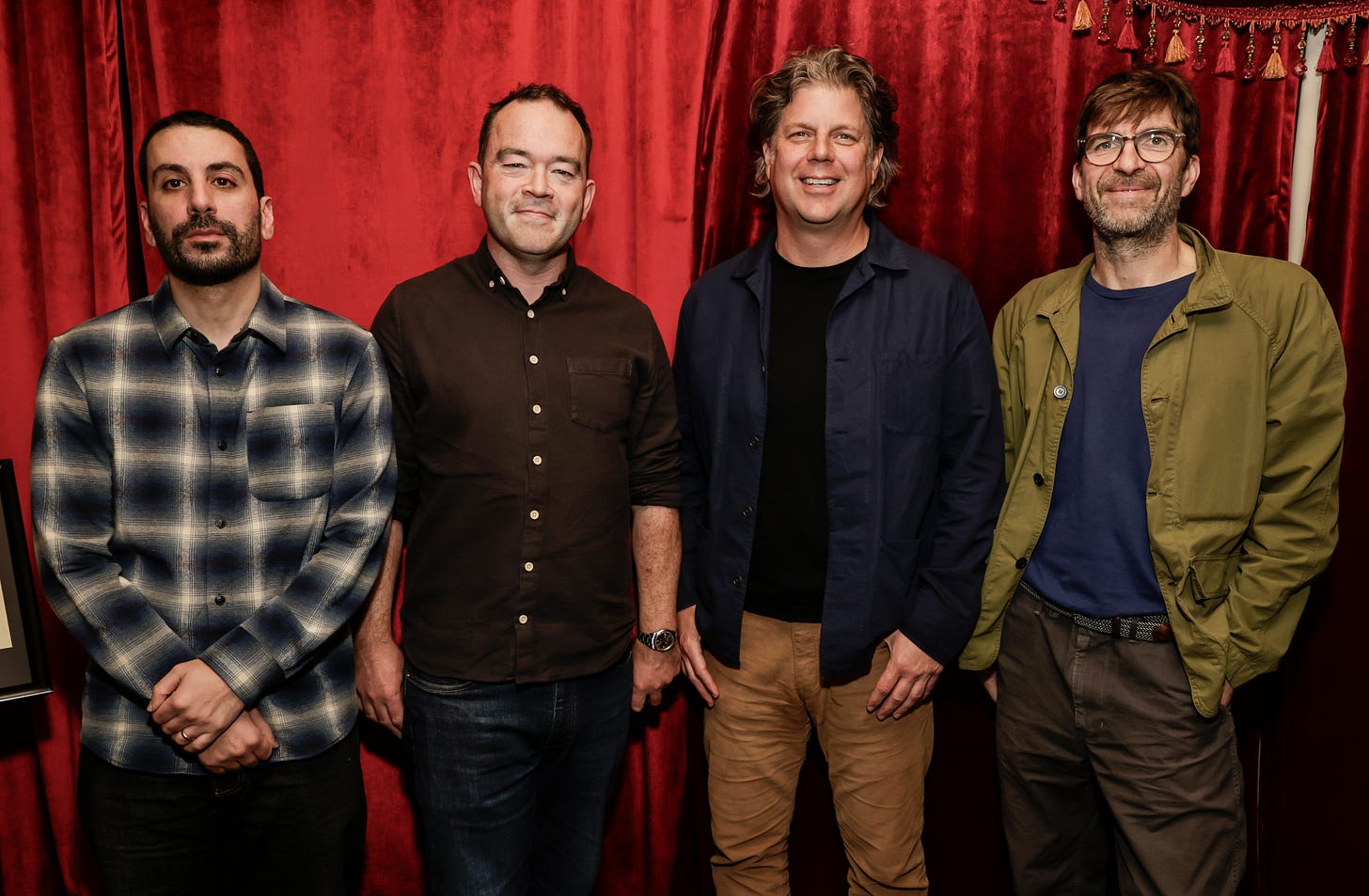
Elaine Low: Let’s hear now from the fine artisans who worked on Blitz. Moderating this conversation is award-winning director Patricia Riggen, best known for her work on films such as Under the Same Moon, Miracles from Heaven and The 33, as well as TV series such as Amazon Prime Video’s Jack Ryan to Hulu’s Dopesick.
Welcome to the stage, Patricia.
Patricia Riggen: Hi, everyone. This is very exciting. Today we’re going to talk about Blitz. I don’t know if you guys have seen it, but it’s just an incredible movie. I just saw it last night, I’m still in shock. Let’s introduce production designer Adam Stockhausen; supervising sound editors and re-recording mixers, James Harrison and Paul Cotterell; and picture editor Peter Sciberras.
Wow, wow, wow, wow. This movie is a real audiovisual journey. Let’s start by talking about, you know, it’s about Blitz, which is the era in which, basically, they were bombarded by planes.
And I think it’s the first time that I really feel the horror that the UK people experienced in their own country and not outside, and particularly in London. I didn’t know there were 40,000 people that died, 20,000 just in London, and you guys truly recreated that era and that period.
And I want to start by talking about research, because it’s a very well-documented and photographed era. So let’s start by asking our production designer, how true did you stay to the real places, events, locations, or did you use the research as a springboard and then took it from there?
Adam Stockhausen: Hi everyone. We did a lot of research for this. In particular, there’s a woman named Emily Lutyens who works with me all the time and did deep dives into all this stuff. And it’s an incredibly well-photographed period, so there’s a lot of research. [Director] Steve [McQueen] wanted — always wants to be very close to the historical reality of things, to tell these stories as truthfully as he can. And he was building the narrative around actual events. So the actual, true bombing of the Café de Paris, the Balham disaster in the Tube, these are real events that happened. And so he was building the story around that, and he kind of had the same approach with us on specific research for what we were doing in the art department.
We were finding specific images of torn-apart buildings and looking at the lives and the rooms and the family structures that you could see inside. And then trying to recreate those things as faithfully as we could within this bigger narrative that we were doing, to be telling the truthful stories of these people’s lives to the best of our abilities.
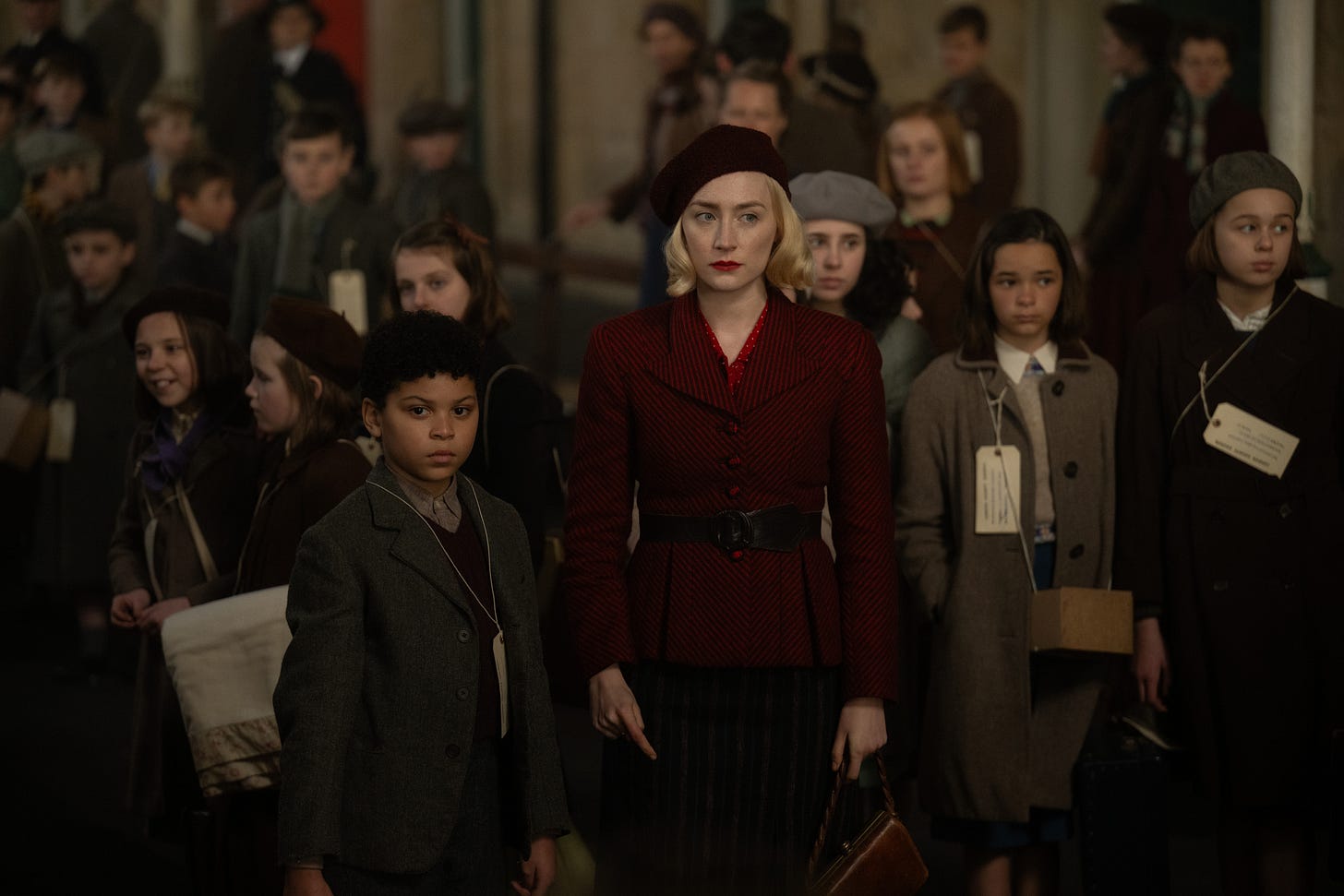
PR: The sets are astonishing. I can’t take them out of my head, and we’ll get to that in a second. But let’s talk about sound, and I think that my question still applies to you guys because the movie really creates an immersive experience, you feel like you are getting bombed in that moment. And I was thinking, did you guys do research on how those planes sounded and those bombs and those missiles, or did you just basically invented everything from scratch and what the image was telling you?
James Harrison: No, no, there’s lots of research that went on. And Steve had done a load of research for the shoot anyway, which he passed on to us. I mean, my first port of call was my grandparents. My grandfather was a navigator on a bomber himself, and they sort of lived during the Blitz. And before they passed away, bless them, they had written memoirs. So, it was really interesting to revisit those.
That was my very first port of call, just reading through these stories that they had, from the ground from my grandmother and from up in the air as well. And it was just a really interesting insight into that world, which is, it’s just — we have to keep retelling these stories, because as a species we keep making the same mistakes again and again and again.
So we have to keep reminding ourselves of the terror of the past. But yeah, in terms of the planes and stuff, there’s lots of archive things as well, which we start with. And we did multiple recordings to try and be as good and authentic as possible. And that was our starting point that then we have to make it a bit more cinematic.
If I say that, we always start with as real as possible and then we make it bigger and play with perspectives and things like that.
Paul Cotterell: Similarly, we did a lot of crowd recordings. There’s so many people in the shots. And we tried to cast voices from people who maybe had grandparents who lived in London at that time.
So they just have a natural ear for rhythms and language. And we scripted a lot of lines, but there’s just a sort of a cadence that came that sounds true, you know, so we try to make it as authentic in that way as well.
PR: You know, I feel like the moment of creating the soundtrack in a movie is so precious and so important, and it really elevates the narrative and the storytelling to another level.
I’m that kind of director too that really cares. So when you say you’re casting the crowds with that specific ideas in mind, it’s super important because you can enhance everything in that moment.
JH: I think, one thing from Steve very early on was he was very clear that he didn’t want it sort of clean and sort of precise. Sometimes he wanted to have that chaos and the messiness and almost be overwhelmed. And it’s something that we realized that with sound, that sort of mayhem that can occur, it can really have an emotional impact on the audience. It can really sort of affect them in a way that only audio can. And it’s something we were very attentive with in the test screenings we did.
We were making sure we were watching the audience and whether we were getting that response.
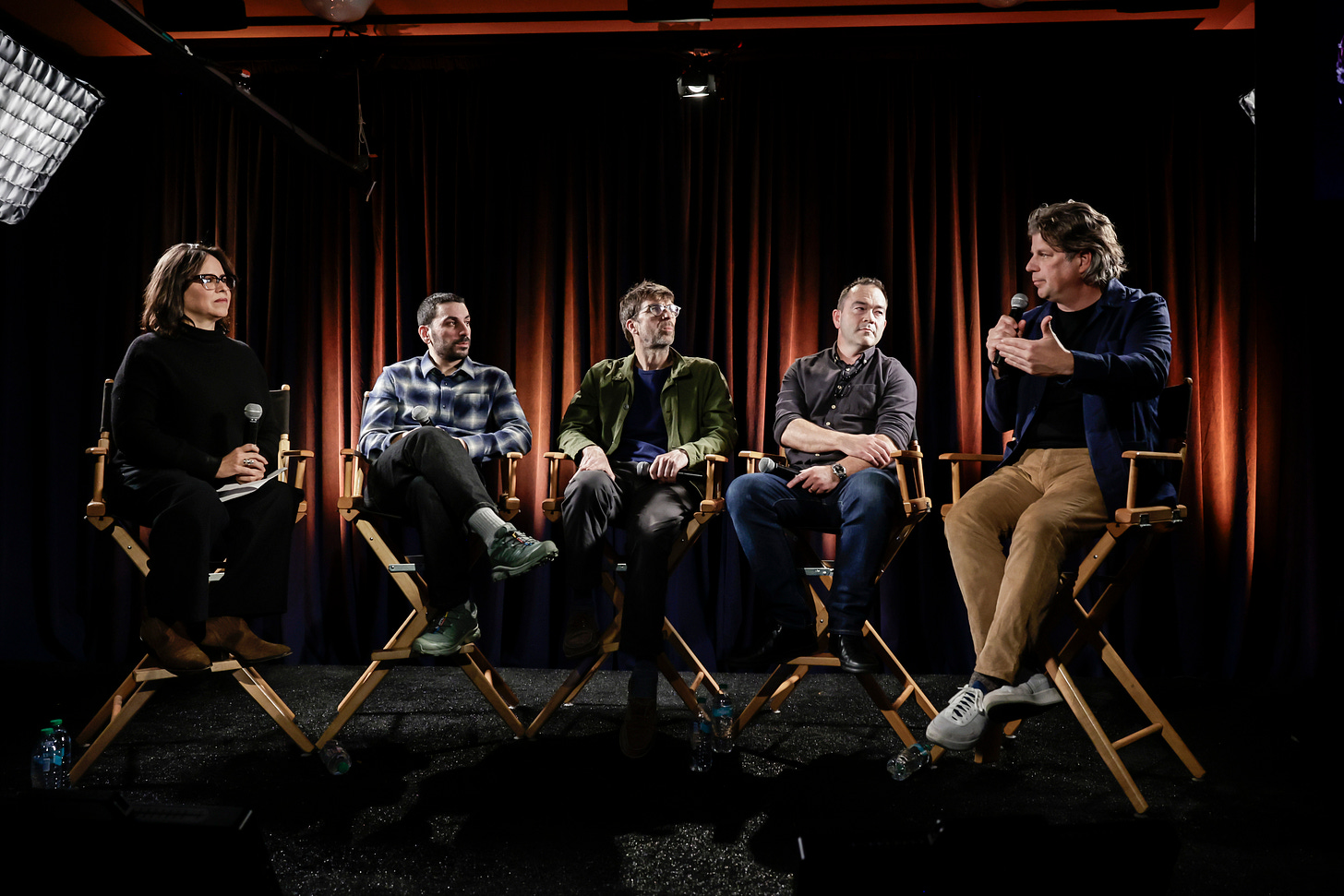
PR: But what’s great about what you guys are saying is normally, like, when you cast a bunch of extras, you make sure that they don’t have, you know, the clean eyebrow of this era versus that one. But you guys are doing it as well with the way they talk in a crowd, which is a really cool thing. Let’s talk about editing. So the movie follows, you know, I know it has a particular challenge because the movie follows the story of the mother that stays, Rita [Saoirse Ronan], at home and the kid that is in this journey. He’s sent away to the countryside, and he doesn’t want to be there, so he’s trying to find his way back.
So it’s told, it’s told in parallel stories, and I’m sure that presented some very interesting challenges. Do you want to talk about that?
Peter Sciberras: So yeah, the principle of just finding the connections and finding a way for their stories to talk to each other and be a part of the same narrative, even though they’re in different places, in different situations, was really the most important part of it.
PR: Do you want to give us an example of that?
PS: I guess, one of the really powerful emotional transitions I think is when Ife and George [Elliott Heffernan] are holding hands down the street and we kind of crossfade to Rita coming into Mickey’s [Leigh Gill] shelter.
And there’s just a kind of overwhelming sense of emotion, and it’s just, they’re connected without being in the same place in a way, and just finding those moments was crucial
PR: And so I’m pretty sure that there were a lot of scenes that you had to find a balance later, you know, right between the amount of time you spend with the boy and the mom. And a lot of scenes had to potentially be taken out to achieve that balance.
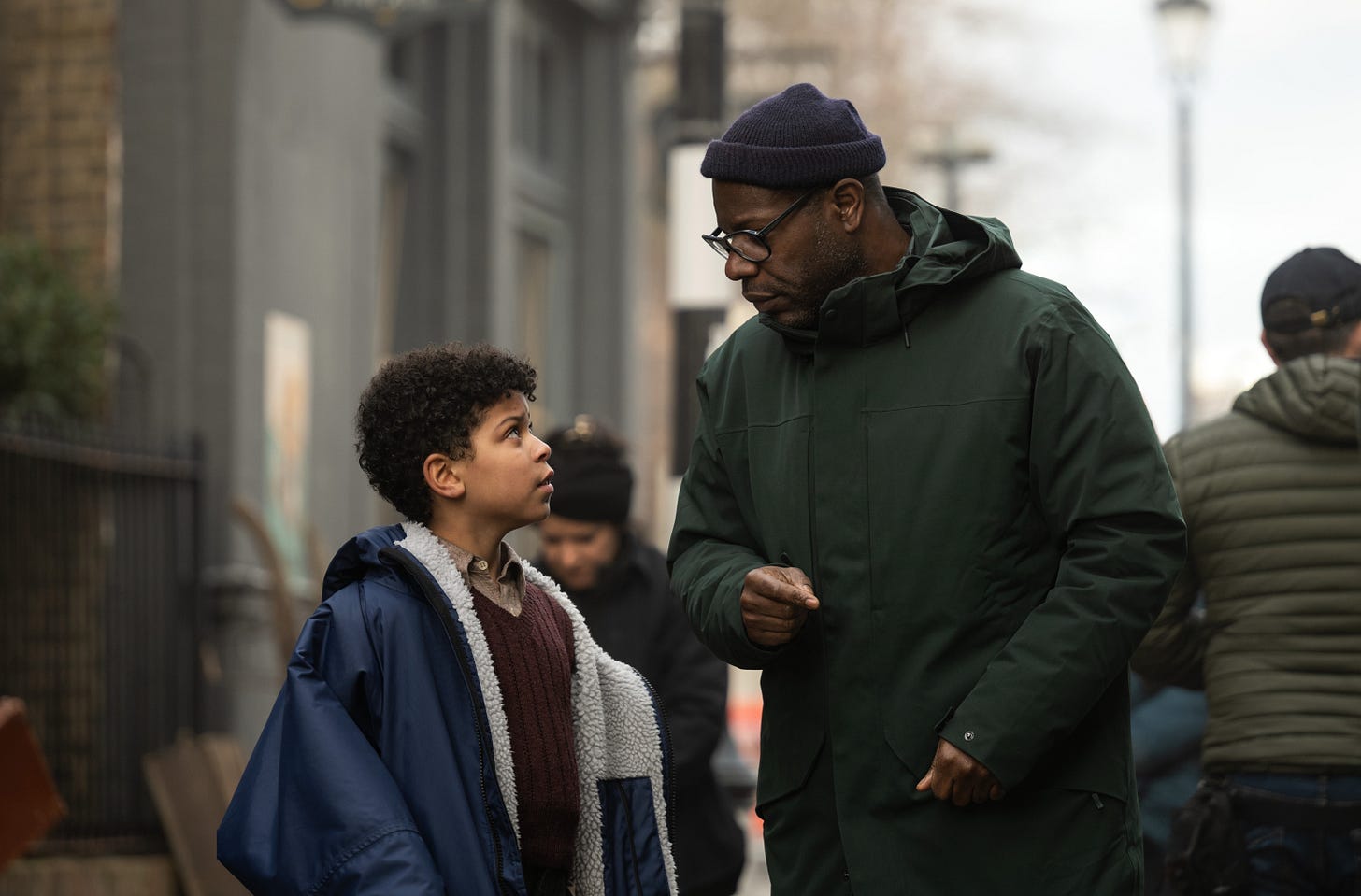
PS: Weirdly, not many scenes needed to be taken out, but a lot of the scenes needed to be moved around so that we didn’t have too big a block of Rita’s story and too big a block of George’s story, you kind of always needed to check in with each character.
Otherwise, if you leave someone for too long, you’ve kind of got to rebuild the relationship with that character again. So it was kind of crucial to never be away from someone too long, but also not be cutting too much. So, just finding that right balance where you’re kind of consistently thinking about both of them, essentially, and never leaving one behind.
PR: Let’s go back to the sets. Wow. The Tube, that’s the metro station. Um, you know, the missile factory. You know, things that come to my mind. The blue of the missile factory. The streets all destroyed. The fabulous ballroom that you created. Talk about what’s your favorite set and what was the process of creating this?
AS: I don’t know, I don’t really pick favorite sets, but there were a lot of fun ones on this one for sure. The process of the whole arc of this one was that Steve wanted to be surrounded by the real environments.
He wanted to be on location in 1940 to the degree that we could do that. And so we were searching for places where that would be possible and saying, you know, well, we’re in London for instance, but it’s next to impossible to close down a mainline train station in London. So having to leave town for some things to allow him to have the room to have hundreds of children on the platform with a real steam train and not be piecing it together in pieces and parts later on as a digital build.
We kind of backed into a plan that would allow that sort of maximum version of building the surroundings for him, which had a strange effect of having us scouting for empty, like, missing pieces in a way. Ee would scout these streets looking for a hole in kind of a generally good environment, a place to actually build our set, which for this movie we built a lot of them outside in real street environments rather than building them on a backlot with a blue screen surrounding. And so it’s kind of an interesting process that way.
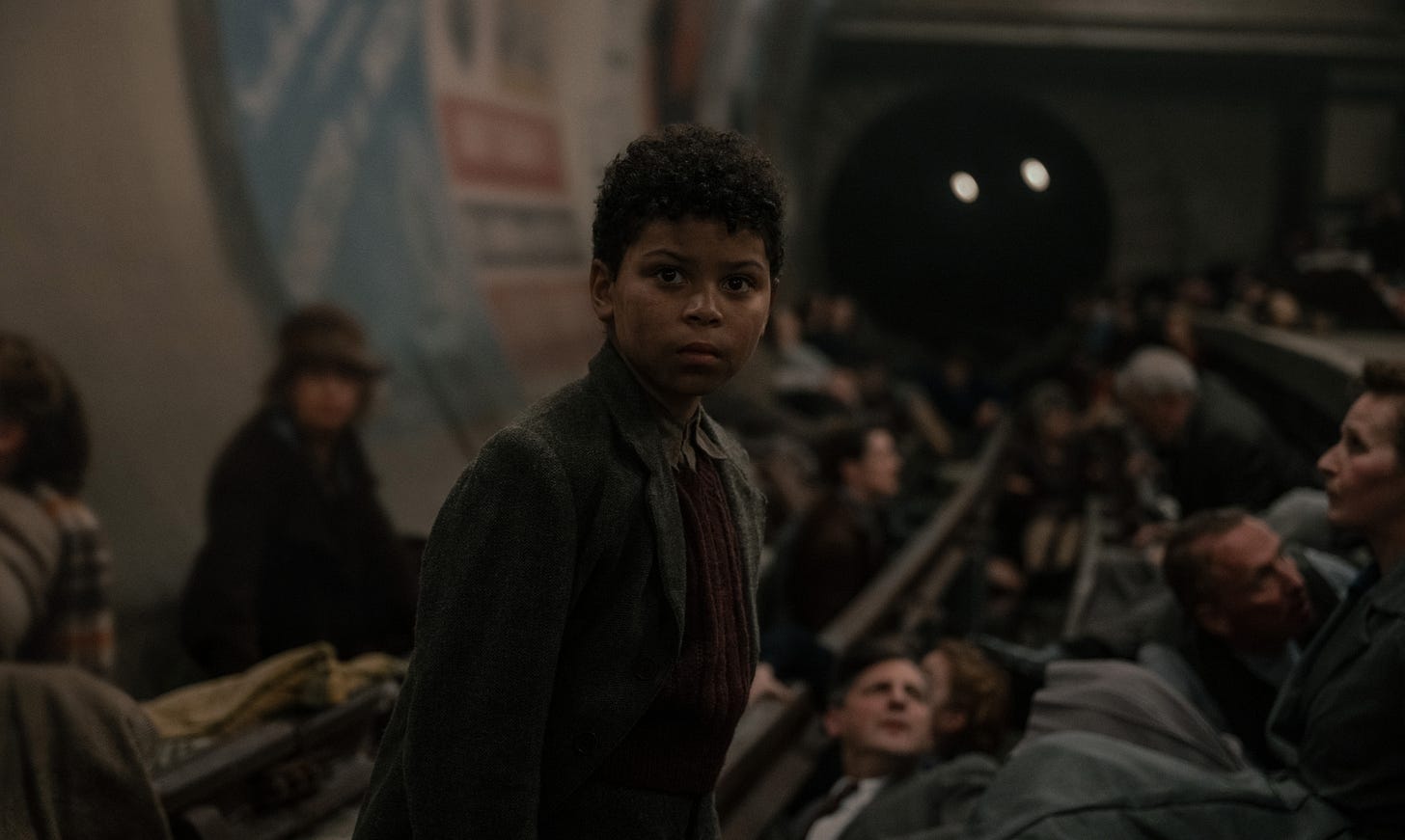
PR: Talk about the subway station, the, the metro station.
AS: Again, it’s based on this real event that happened. And so we had to flood the thing with water, and so it had to be a full stage build. That one we could not be on a location for.
And so we storyboarded the process, the sequence out until we had a look and broke it down into the chunks of the sequence that we needed. And so it was actually two sets. There was one set that was the escalator set that we see flooding with the gates at the bottom, that we see early on in the film when they’re going down into the shelter in the Tube. And then of course we see it later as George is trying to make his way back up. And that was a kind of like, we took the tank at Leavesden and it was like a straw stuck into the tank.
The bottom part of the set was in the water and the escalator carried up and out of it. But the big half of it was the large platform for the Tube, and there wasn’t a tank big enough for that one. So we took this very long stage, we made the platform, reinforced the outside of it like crazy so that it could hold the pressure of the water and then flooded the set rather than putting the set into a tank and flooding the tank. And we crossed our fingers.
PR: It’s incredible. Let’s talk about the sound and how you guys achieved that immersive quality that the movie has, and I think it has to do with probably working from, like, characters perspectives.
JH: Yeah, I mean, Steve had, the way he was shooting as well, sometimes was very low from George’s perspective, from this 9-year-old’s perspective.
And he’d spoken to us about that as well, in terms of, you know,he’s going somewhere where he hasn’t been before, and it would have been larger than life and slightly scary at times, and so he definitely wanted to interplay on that. So that was something that we always had in the back of our minds, actually, just in terms of how he would experience and how he would feel at times with these things going on.
Especially at the train station where he first comes and he’s running away and then just the slamming of the doors, and the train’s a lot larger than it sort of should be, really, but he would have probably felt that especially in the gravitas of that situation as well
PR: Particularly in the metro station, I found myself “ah!” before anything happened, like Jaws, right? Like the shark. So was there like a special treatment to the sound or no, between the kid and the mom?
James Harrison: It was just something that we’d always had in our minds, and so, I mean, the arc of the film, we are always conscientious of that as well. And just shaping the sound so that it’s sort of, there’s a progression through it. And we start off a lot more from George’s perspective that start and then by the end it’s all kicking off anyway, so you don’t really need to do any perspective shifts. But then the danger really ramps up and there’s a lot more at stake by the end, so that’s definitely something we were playing with.
PR: Let’s talk about the I guess the flashbacks, that’s another part that’s interesting about the narrative is that not only are you following both storylines, but you’re also cutting back to inform us, through flashback, of their backstories and it’s, the two of them that we go to flashback, right?
Do you want to talk about how that … ?
PS: Yeah, absolutely. I guess the flashbacks in this film, they’re not really serving like a great narrative purpose. They’re kind of far more concerned with emotion and showing the bond between the family and what George’s home life was like.
Rita’s flashback introduces you to Marcus, which is George’s dad, and we find out what’s happened to him and that’s really important also. But I guess the ones I’m speaking of more are the ones in the house, just seeing them at home together, which you don’t really get a chance to at the beginning of the film because George is being sent away for his own safety.
So it’s really these kind of sweet moments where you just get to see them together and see the love in the family and also see the safety George has at home, you know, being a mixed-race kid in that time. Being sent away is one thing, but also being sent away to the country as a mixed-race kid is a whole other thing in that time.
So it was really crucial to show how safe he felt at home and how much love there was in that house.
PR: Did you explore different styles, editing styles in the movie?
PS: Well, I think the flashbacks are a good example of, you know, they were shot far more loose and improvisational. So that was a very different style to the more classical World War II setting for most of the picture.
And, you know, the jazz club where Marcus and Rita are dancing. I mean, that has its own style altogether. It’s kind of, you know, the whole idea in that one was just to squeeze as much life into it as possible and as much joy and just to kind of contrast with where we were in the rest of the films.
And just give the audience a sense of Rita’s life beforehand, I guess. And also just London at the time, you know. Because this film is about London as much as it is about everything else. So I think it was really important for Steve to be able to show that and there’s the history that there’s also the life amongst the chaos and the destruction later.
PR: So the word that keeps coming up is Steve. So let’s talk about Steve. I think he’s one of the best directors of our time. You have worked with a few of those by the way, like Spielberg, like Wes Anderson too. So what’s the difference? Tell us a little bit about how, what Steve is like working. What’s the process with him versus other?
AS: I mean, everybody has their own particular style and their own particular way. With Wes, we end up planning out shots meticulously in advance and working and working and working on a frame and then executing it. And with Steve sometimes, you know, he’ll want to be in a fully immersive environment and bring the actors in and then find the exact blocking of the scene through the life that occurs right at the moment of rehearsing the scene, you know, and so something like that is quite different.
But I’m always shocked by how much similarity there is, you know, because with everybody we’re approaching the story from the same place and starting with research and starting with imagery that excites each of these directors about finding the life of the characters and the life of the scene and about trying to pull that forward and make that live in their built environments, you know, so it’s funny. It’s like, the approach can be polar opposites and yet the process of getting there to find the story is the same.
PR: Any particular thing you want to talk about in that relationship with, particularly in Blitz?
AS: One that I really loved on this one is Arthur’s lair, the pool hall underground. And this thing has happened with Steve a couple of times on the films we’ve worked on together, where it’ll say one thing on the page and then in the process of scouting and the process of trying to find the characters and find the film as we’re looking at their lives and looking at the locations and walking around it, he’ll see something that excites him and makes him go in a completely different direction.
And that happened a couple of times, and one of the biggies is, you know, we were scouting for Marcus’ club in the Mildmay Club in London where, and we were looking at the upstairs area and we loved it and it was perfect and we were gonna shoot there and it was one of those sort of, “Well, there’s one more thing, let’s go downstairs.” There’s this amazing room and there’s this snooker hall that has a long area full of these green tables and on the wall are these pool cues hanging in cases and some of them left behind, you know, from members of the club and some of them are left behind by soldiers who went off to World War I and never came back.
And Steve walked in and said, “Well, this is it.” And it completely changed the direction of the character and was a great location but it was also so exciting to be saying that they’re not hiding out in a ruined warehouse someplace. They’re right in front of everybody’s eyes. They’re right there. And that kind of thing happens sometimes and it’s magical with Steve.
PR: And hopefully it doesn’t happen two days before shooting, right?
AS: Definitely not.
PR: Let’s talk about in the sound section of creating the sound at the end.
How was the work with the director there? Does he come in and give you very specific ideas of how he wants to deal with moments, or you guys propose and then he takes … ?
PC: Steve, he was very clear. He knew what film he was making and what it should sound like, but at the same time, you could easily give an idea, and he would say, “That’s the world, you’ve got it there.” Or “no,” kind of thing. You know, it’s very clear. You don’t usually go round and round. He’s very clear as to what goes in and what comes out. But he also directs — I don’t know if you would call it directing, but we would sit and chat for quite a lot of the time around things, like he would tell us an anecdote: “I remember when I was a kid and my mum used to drag me down to the market,” and he would talk about how it looked as a little boy walking through this market. “I had to carry all the shopping round, I was just a donkey. I used to carry all this stuff.” And he would start describing these markets.
And of course there’s scenes of George walking through the markets and you’re kind of thinking, this is, this is it. And it would just, he would put you there, you know.
PR: That’s great, I love it. Tell us about your relationship with the director. Does he sit there all the time? Does he just call and give you notes?
PS: No, he’s very present. He’s in the edit suite, you know, most days, all day. I mean, he’s a busy man, so he’s often got a Zoom to do next door, but he’ll be back.
Just an amazing artist to collaborate with. He’s so intuitive, incredibly decisive, like he does not um and ah very often. He knows exactly what he’s doing, but he’s also incredibly open to ideas and really happy to explore things. And his brain just works in such an interesting way that he can kind of join dots that you haven’t seen and kind of, you know, things just happen really organically and naturally and it’s incredible fun, really.
PR: Well, we have to wrap it, but it’s been a true honor to meet you all, see you all, and you guys really created an absolutely astonishing movie, so congratulations, and I hope the season goes well for you guys. Thank you.

